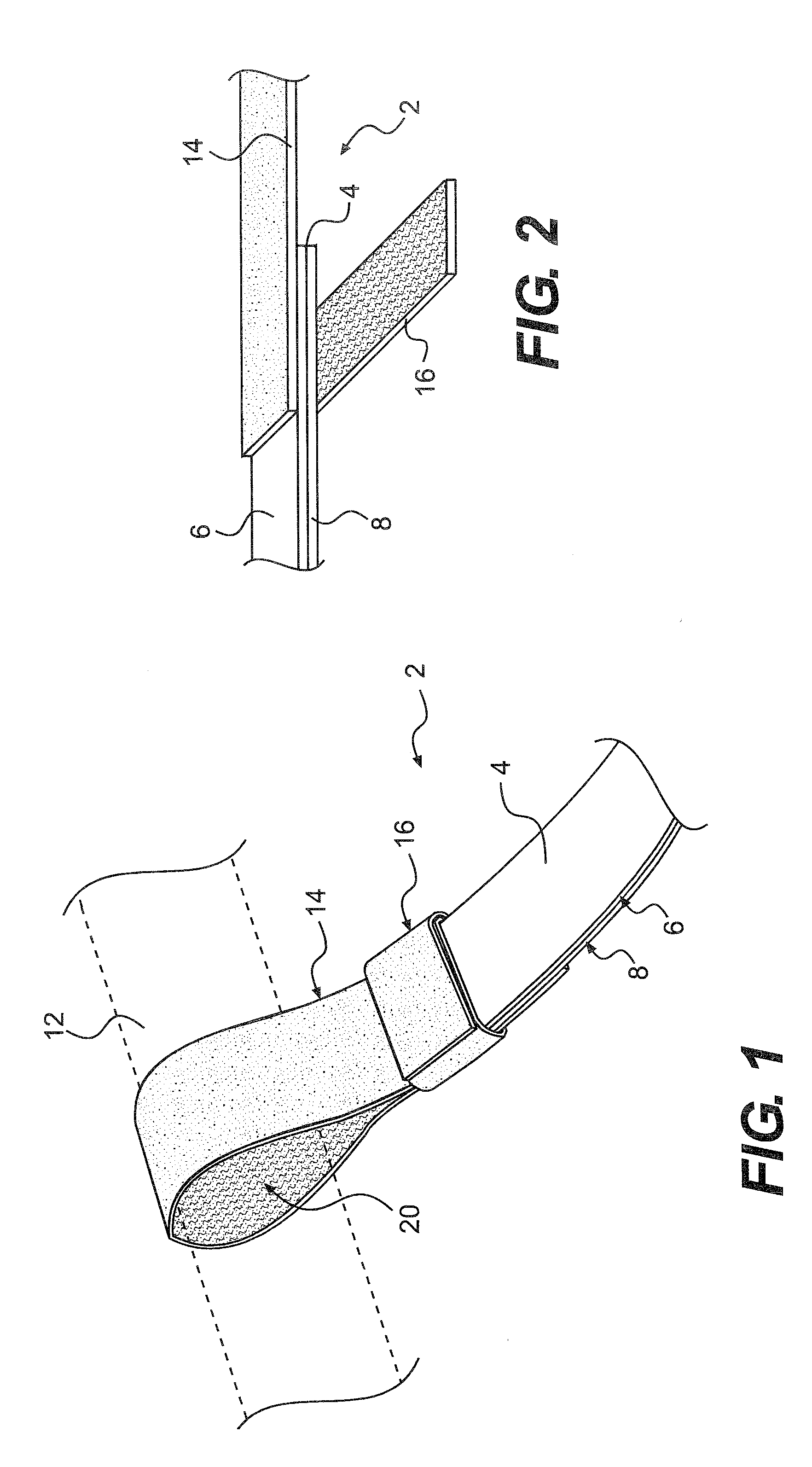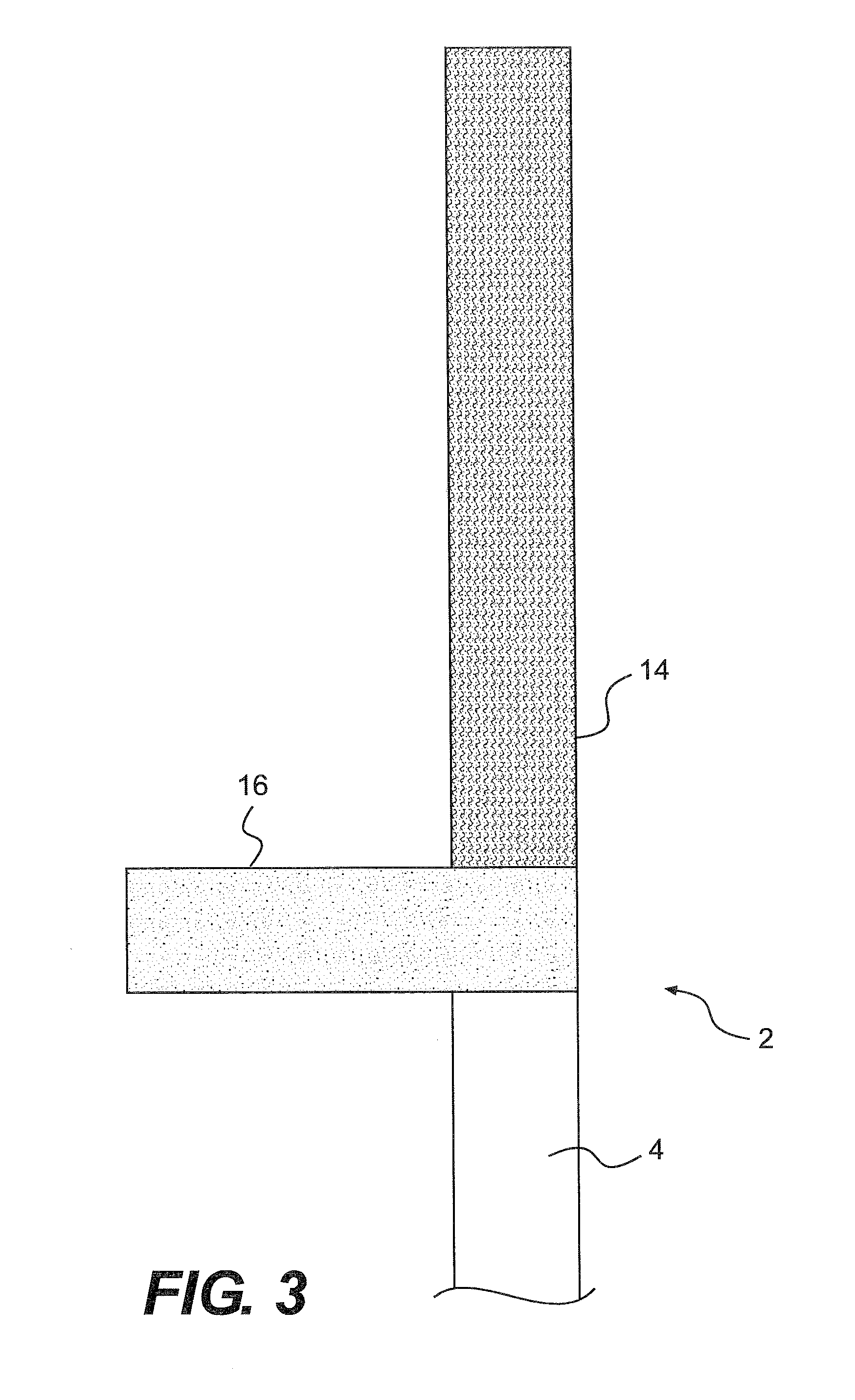Stretchable, elastic tie-down device with fabric fastening means
a fabric fastening and elastic technology, applied in the direction of press-button fasteners, hook and loop fasteners, transportation items, etc., can solve the problems of difficult to stitch the thick plies together, and difficult to achieve the subject tie down construction
- Summary
- Abstract
- Description
- Claims
- Application Information
AI Technical Summary
Benefits of technology
Problems solved by technology
Method used
Image
Examples
Embodiment Construction
[0023]The subject apparatus now will be described more fully hereinafter with reference to the accompanying drawings, in which preferred embodiments of the invention are shown. This invention may, however, be embodied in many different forms and should not be construed as limited to the embodiments set forth herein; rather, these embodiments are provided so that this disclosure will be thorough and complete, and will convey the scope of the invention to those skilled in the art.
[0024]As briefly described above, conventional tie down devices that are stretchable and elastic include tubular bodies. Some tie down straps comprise a single-ply, non-stretchable body. In one embodiment of the subject apparatus, the tie down device body comprises a flat but stretchable and elastic material. In another embodiment, it has surprisingly been found that stitching two flat plies together does not sacrifice the elasticity of either ply. The plies may be combined to provide a stretchable, elastic b...
PUM
 Login to View More
Login to View More Abstract
Description
Claims
Application Information
 Login to View More
Login to View More - R&D
- Intellectual Property
- Life Sciences
- Materials
- Tech Scout
- Unparalleled Data Quality
- Higher Quality Content
- 60% Fewer Hallucinations
Browse by: Latest US Patents, China's latest patents, Technical Efficacy Thesaurus, Application Domain, Technology Topic, Popular Technical Reports.
© 2025 PatSnap. All rights reserved.Legal|Privacy policy|Modern Slavery Act Transparency Statement|Sitemap|About US| Contact US: help@patsnap.com



